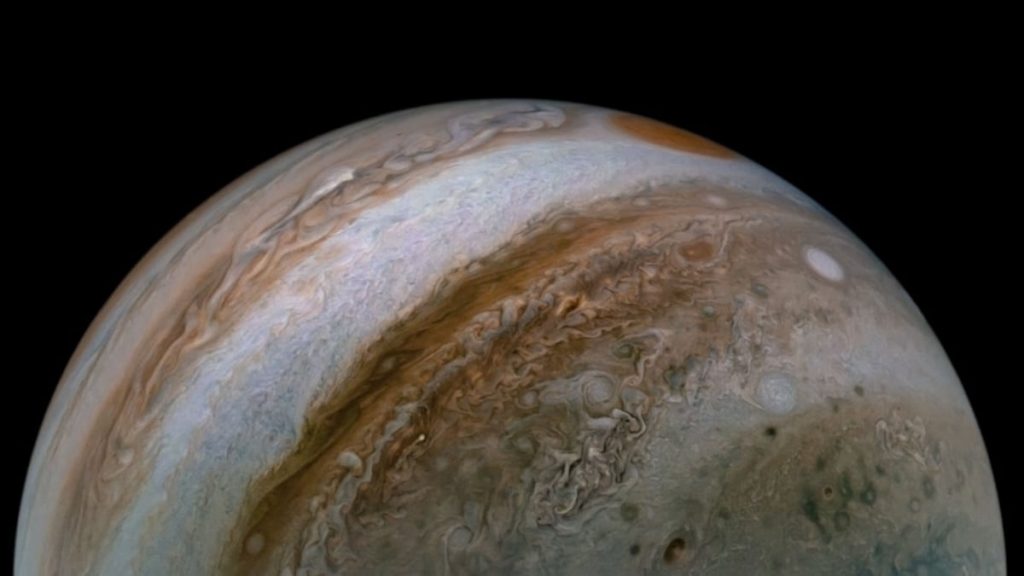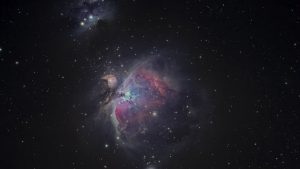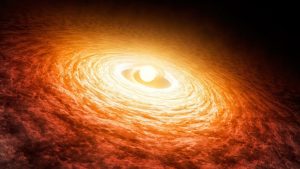Juno’s Study Provides Insight on Jupiter’s Composition, Gravitational Field
A new study has researched about Jupiter’s metal concentration and distribution, suggesting that the planet ate a lot of rocky planetesimals when it was young. The authors sought to use Juno’s Gravity Science experiment to investigate the metals in the planet’s atmosphere. Jupiter’s atmosphere isn’t as homogeneous as originally imagined, according to experts.

Jupiter is usually acknowledged as the solar system’s oldest planet. Scientists, however, want to know how long it took to create. A new study states that the planet’s metal concentration and distribution suggest that Jupiter ate a lot of rocky planetesimals when it was young. Since the Juno spacecraft reached Jupiter in July 2016 and began collecting data, it has revolutionised the understanding of the planet’s formation and development. Its Gravity Science instrument is one of the mission’s highlights. It sends and receives radio messages between Juno and Earth’s Deep Space Network. The procedure determines Jupiter’s gravitational field and provides researchers with more information about the planet’s composition.
Jupiter began its formation by accreting rocky material. After a period of fast gas accretion from the solar nebula, it became the monster it is today. However, there is a substantial dispute about the early stages of rocky accretion. Is it possible that it accumulated greater masses of rocks, such as planetesimals? Or did it accumulate stuff the size of pebbles?
The goal of the study, published in the journal Astronomy and Astrophysics, was to find an answer to that.
The authors sought to use Juno‘s Gravity Science experiment to investigate the metals in the planet’s atmosphere. Jupiter’s atmosphere isn’t as homogeneous as originally imagined, according to experts. Metals are found in greater abundance towards the planet’s core than in the other layers. In altogether, the metals weigh between 11 and 30 Earth masses.
The researchers used the data to create simulations of Jupiter’s interior processes. Two sets of models were generated by the team. The first group consisted of 3-layer models, whereas the second group consists of dilute core models.
“There are two mechanisms for a gas giant like Jupiter to acquire metals during its formation: through the accretion of small pebbles or larger planetesimals,” explains lead author Yamila Miguel, an assistant professor of astrophysics at the Leiden Observatory and The Netherlands Institute for Space Research.
Miguel added that once a young planet reaches a certain size, it begins to eject stones. Previously, Jupiter’s current level of metal richness seemed impossible. As a result, the researchers can rule out a scenario in which Jupiter formed entirely of pebbles. “Planetesimals are too big to be blocked, so they must have played a role,” said Miguel.
With increasing distance from the centre, the number of metals in Jupiter’s interior drops. This indicates that there is no convection in the planet’s deep atmosphere, which scientists earlier assumed to exist. The authors also infer that once Jupiter originated, even when it was still young and heated, it did not mix by convection.
The findings of the researchers also apply to the study of gaseous exoplanets and attempts to identify their metallicity. In the case of Jupiter, there was no way to tell its metallicity from afar. Scientists could only determine the metallicity indirectly after Juno arrives back.



